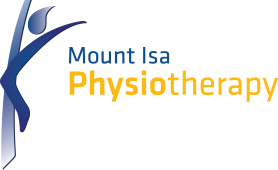Sciatica
The vertebrae in your spine are separated by tissue that is flat, flexible and round, these are called discs. Sciatica starts with a disc in the lower spine of the body that has become herniated. When the disc is affected by wear and tear with gradual use, the soft center starts projecting itself from the outer ring.
Symptoms of Sciatica
Sciatica is characterized by pain in the lower back which gradually moves to the leg. The frequency of occurrence or the intensity of the pain can vary. There will be a sharp and jabbing pain or a feeling similar to electric shock, which radiates to the legs. The symptoms include sensations of burning, numbness, and tingling. The weakness of the muscle is another common symptom. This condition is bound to get worse by bending the body, lifting weights, and even sudden sneezing and coughing.
It is pretty common in manual labourers, people with sedentary work, and pregnant women. People aged 30 to 50 are more likely to experience this condition too.
Common causes of Sciatica
Pressure on the nerve can arise for a lot of reasons. These include:
• Piriformis syndrome (tightness of the piriformis muscle in the buttock that compresses the sciatic nerve)
• Spinal misalignments / vertebral dysfunction
• Herniated disc/ Prolapsed disc
• Osteoarthritis
• Postural problems (high heels, sitting for a long time, bad mattresses)
• Poor lifting techniques
• Poor bending habits
• Spinal compression due to osteoporosis
Diagnosis and treatment of Sciatica
There can be many reasons for sciatic nerve pain. To rightly diagnose the condition, a physiotherapist will try to find out the exact cause of the sciatic nerve interference. After an initial assessment of the patient’s history, a thorough orthopedic and neurological examination can be done next. Medical imaging techniques like X-ray, CT, MRI and posture pro scan may be used to help accurately diagnose the condition.
Sciatica is a condition that arises due to pressure on the sciatic nerve. Treatment of the condition involves relieving the nerve of pressure. Physiotherapy at Mount Isa Physiotherapy aims to decompress the nerve pressure by allowing subtle movements of the spinal joints and using other methods to ease muscular tension in the lower spine, buttock, and leg.
The various techniques used at the clinic include:
• Spinal decompression therapy
• Spinal mobilization
• Massage and trigger-point therapy
• Dry needling
• Stretching of the tight muscles, joints, tendons, and ligaments
• Ultrasound and electrical stimulation
• Advice to minimize pressure and irritation of the sciatic nerve
• Stretching exercises, heat/ice treatment
Mount Isa Physiotherapy is committed to providing the best treatment for our patients. Please contact us to begin your treatment or if you have any questions.

